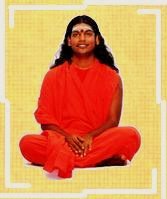West has always focused on facts, while the East has focused on truth. As a consequence the West moved forward in science while the East moved forward in spirituality.
When the great sages of the East looked inwards and realized the truth of their existence, they expressed these in the form of scriptures, the sruti and sastra. In order that the common man could understand these spiritual truths, some of these masters wrote the purana, the epics.
These epics created role models who exemplified these truths that they had experienced in a form that anyone could understand. The purana had characters like Rama and Krishna who the ordinary person could identify with and follow. These characters were based on truth not on fact. When Valmiki talks about the monkeys that occupied Kishkinda, the numbers he uses are so large that Kishkinda could not have physically held so many monkeys. What he is referring to is the impact of those monkeys upon Rama and his mission. When Krishna as a child killed monsters and when Hanuman lifted a mountain, the incidents were meant to convey the truth and impact of the incident upon human consciousness.
Incidents as recorded in the purana are metaphysical, not physical. They are not factual history but truthful experiences. Our sages recorded not day-to-day history, but only those incidents that impacted upon the collective consciousness.
When a scientist conducts an experiment to prove his theory, he does so in three dimensions. These are the easily understood dimensions of length, breadth and depth. A master goes beyond these in his inner experiments to discover truth. He travels in space and time as well. He experiences, expresses and records what is permanent in different space and time dimensions. It may be difficult for you to grasp and accept this, but this is the truth. That is why our scriptures have withstood the test of time and cultures.
Expressions of the experiences of our great masters were recorded as sruti. The rules and regulations that they recommended based on these experiences for societal organization were the smruti. Sruti was the truth and permanent. Smruti were facts that needed to change over time and space.
Spirituality is based on sruti. Religion is based on smruti. Both need to be used for every day life, as theory and practice. However, one needs to understand the difference between truth and facts. Truth transcends facts; spirituality transcends religions.
Truth is stronger than fact!
Oct 10, 2008 at 2:17 AM

Series:
Words From The Master
![]()


 to view a larger map and get directions
to view a larger map and get directions








